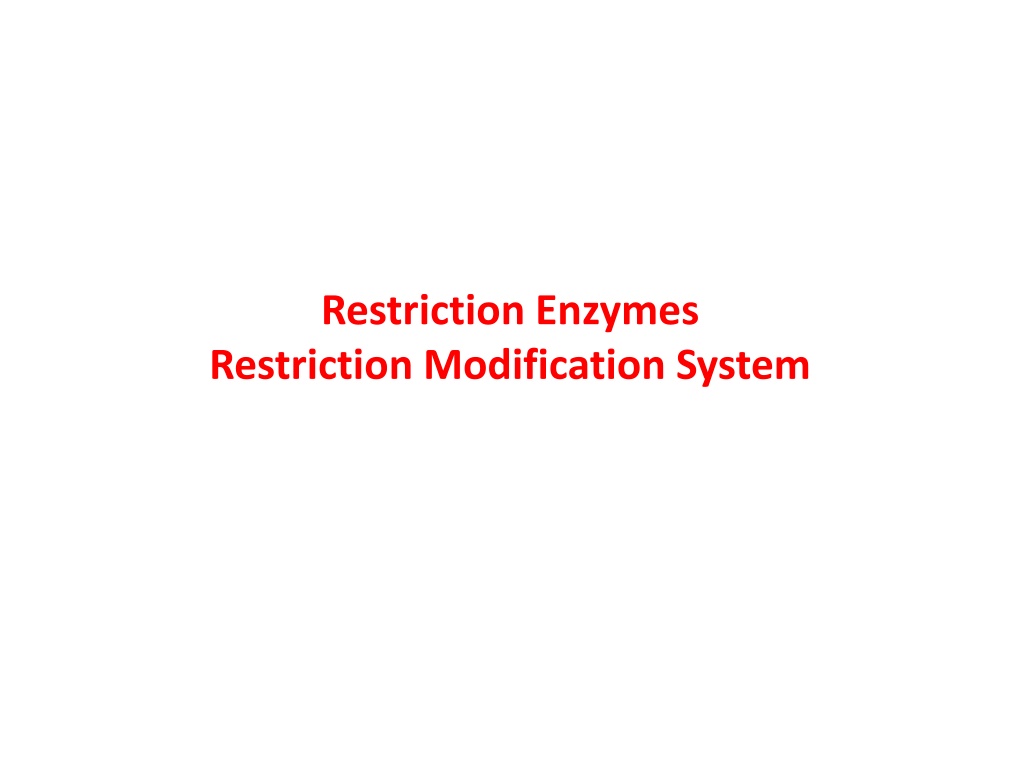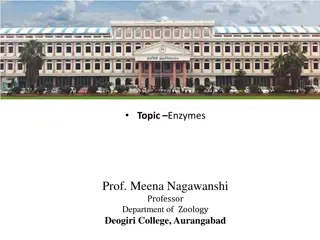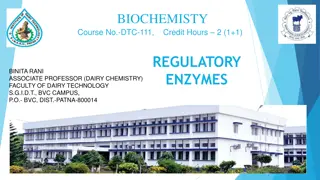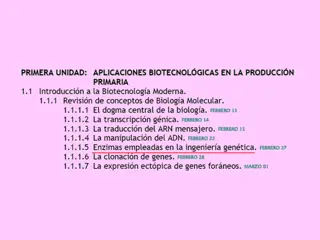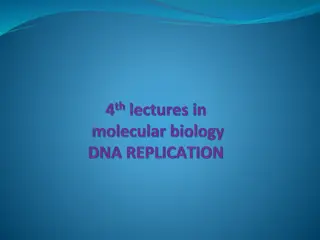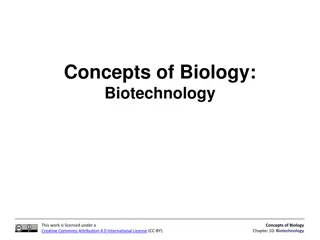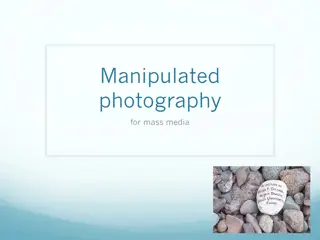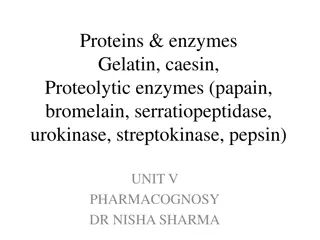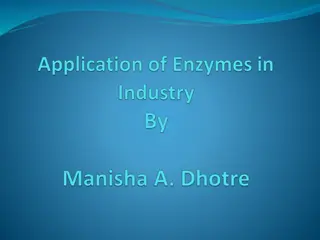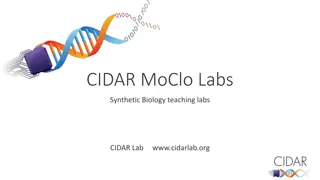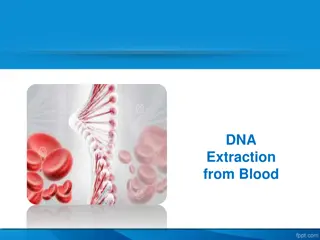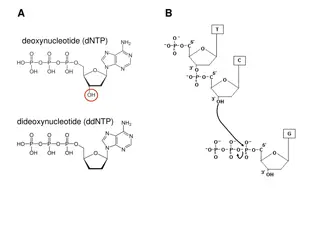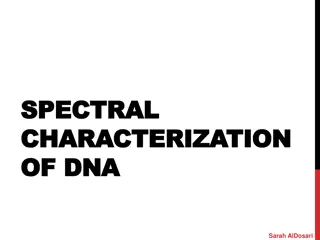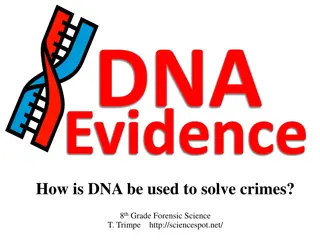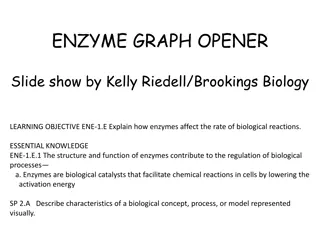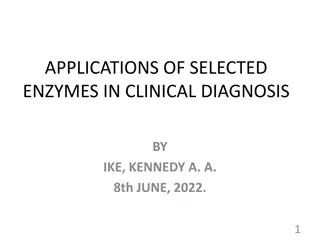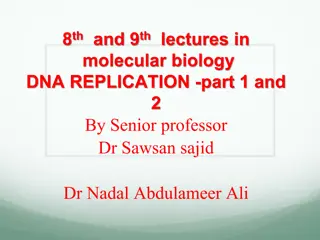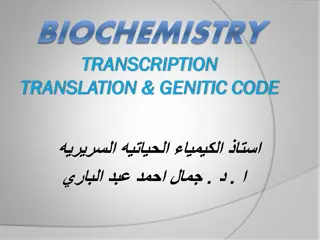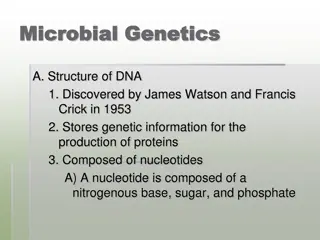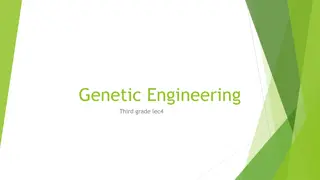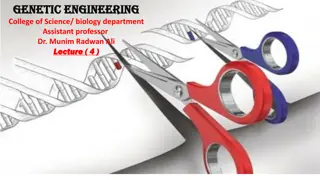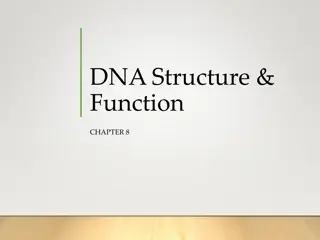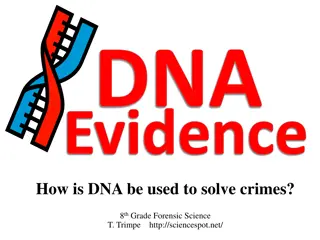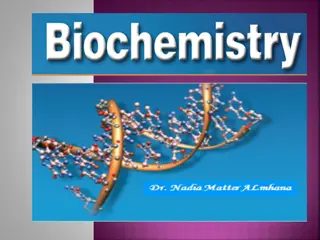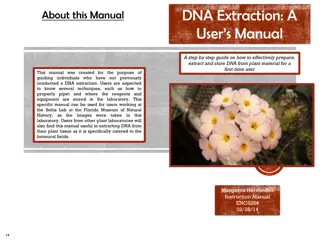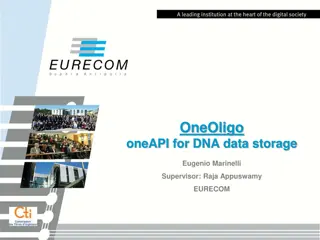Understanding Restriction Enzymes: The Key Players in DNA Manipulation
Restriction enzymes play a crucial role in cutting DNA molecules at specific points, allowing for precise genetic manipulation. This system involves host-controlled restriction and modification mechanisms to defend against foreign DNA, ensuring DNA integrity. Endonucleases recognize specific sequences to cleave DNA, creating restriction sites for enzyme recognition. Functional aspects include endonucleolytic cleavage and methyl group transfer. Explore the world of restriction enzymes and their significance in molecular biology.
Download Presentation

Please find below an Image/Link to download the presentation.
The content on the website is provided AS IS for your information and personal use only. It may not be sold, licensed, or shared on other websites without obtaining consent from the author. Download presentation by click this link. If you encounter any issues during the download, it is possible that the publisher has removed the file from their server.
E N D
Presentation Transcript
Restriction Enzymes Restriction Modification System
Cutting DNA molecules Before 1970s, there was no method of cleaving DNA at the specific points. All the available methods for fragmenting DNA were non- specific. Mechanical shearing Intense sonication with ultrasound: can give DNA length to about 300 nt. High MW DNA is sheared to a population of molecules with a mean size (~ 8kb) by stirring at 1500 rpm for 30 minutes.
Host-controlled restriction and modification The in bacteria and other prokaryotic organisms, and provides a defense against foreign DNA, such as that borne by bacteriophages. restriction modification system (RM system) is found Bacteria endonucleases, which cleave double stranded DNA at specific points into fragments, which are then degraded further by other nucleases. This prevents infection by foreign DNA introduced by an infectious agent (such as a bacteriophage). have restriction enzymes, also called restriction effectively destroying the As the sequences recognized by the restriction enzymes are very short, the bacterium itself will almost certainly contain some within its genome. In order to prevent destruction of its own DNA by the restriction enzymes, methyl groups are added. These modifications must not interfere with the DNA base-pairing, and therefore, usually only a few specific bases are modified on each strand.
Endonucleases phosphodiester bonds. They do so only after recognizing specific sequences in DNA which are usually 4-6 base pairs long, and often palindromic. cleave internal/non-terminal A palindrome is a word, number, phrase, or other sequence of characters which reads the same backward as forward, such as madam. For example, the sequence ACCTAGGT is palindromic because its complement is TGGATCCA, which is equal to the original sequence in reverse complement.
Restriction sites, or restriction recognition sites, are located on a DNA molecule containing specific sequences of nucleotides, which are recognized by restriction enzymes.
Functionally, REases cleave endonucleolytically at phosphodiester bonds, generating 5 or 3 overhangs or blunt ends. MTases transfer the methyl group from S-adenosyl methionine to the C-5 carbon or the N4amino group of cytosine or to the N6amino group of adenine 5 -G/AA* T T C-3 3 -C TT A*A/G-5 The position at which the restricting enzyme cuts is usually shown by the symbol / and the nucleotides methylated by the modification enzyme are usually marked with an asterisk.
Restriction-modification (R-M) systems are important components of prokaryotic defense mechanisms against invading genomes. They occur in a wide variety of unicellular organisms, including eubacteria and archaea, and comprise two contrasting enzymatic activities: a restriction endonuclease (REase) and a methyltransferase (MTase). The REase recognizes and cleaves foreign DNA sequences at specific sites, while MTase activity ensures discrimination between self and nonself DNA, by transferring methyl groups to the same specific DNA sequence within the host's genome
R-M SYSTEM Restriction systems allow bacteria to monitor the origin of incoming DNA and to destroy it if it is recognized as foreign. Restriction endonucleases recognize specific sequences in the incoming DNA and cleave the DNA into fragments, either at specific sites (Recognition sequences) or more randomly. When the incoming DNA is a bacteriophage genome, the effect is to reduce the efficiency of plating, i.e. to reduce the number of plaques formed in plating tests. The phenomena of restriction and modification were well illustrated and studied by the behavior of phage on two E. coli host strains.
If a stock preparation of phage , for example, is made by growth upon E. coli strain C and this stock is then titred upon E. coli C and E. coli K, the titres observed on these two strains will differ by several orders of magnitude, the titre on E. coli K being the lower. The phage are said to be restricted by the second host strain (E. coli K). When those phage that do result from the infection of E. coli K are now replated on E. coli K they are no longer restricted; but if they are first cycled through E. coli C they are once again restricted when plated upon E. coli K. Thus, the efficiency with which phage plates upon a particular host strain depends upon the strain on which it was last propagated. This non-heritable change conferred upon the phage by the second host strain (E. coli K) that allows it to be replated on that strain without further restriction is called modification.
EOP (Efficiency of plating); a quantification of the relative efficiencies with which different cells can be infected by viruses, and support viral replication. It is the ratio of the plaque count to the number of virions in the inoculum.
The restricted phages adsorb to restrictive hosts and inject their DNA normally. When the phage are labelled with 32P, it is apparent that their DNA is degraded soon after injection (Dussoix & Arber 1962) and the endonuclease that is primarily responsible for this degradation is called a restriction endonuclease or restriction enzyme (Lederberg & Meselson 1964). The restrictive host must, of course, protect its own DNA from the potentially lethal effects of the restriction endonuclease and so its DNA must be appropriately modified. Modification involves methylation of certain bases at a very limited number of sequences within DNA, which constitute the recognition sequences for the restriction endonuclease. This explains why phage that survive one cycle of growth upon the restrictive host can subsequently reinfect that host efficiently; their DNA has been replicated in the presence of the modifying methylase and so it, like the host DNA, becomes methylated and protected from the restriction system.
A lambda phage stock grown on one strain of E. coli (strain B) infects that strain with high efficiency. This same phage stock infects a second E. coli strain R with very low efficiency. Recovery and re-titreing of progeny phage from one of these rare plaques shows that they infect the R strain with high efficiency, but infect the B strain with very low efficiency. Recovery and re-titreing of progeny phage from one of these rare plaques shows the same phenomena described above. Phage grown in one strain infect that strain with high efficiency but infect the other strain with low efficiency.
Host restriction turned out to be a bacterial analog of an immune system allowing bacteria to recognize and defend themselves against foreign invaders (DNA molecules). Host restriction is a two component system consisting of 1) a Restriction Endonuclease: Restriction endonucleases get their name from i) the phenomenon of host restriction ii) enzymatic cleavage of the DNA backbone within the DNA molecule (as opposed to exonucleases which only break off nucleotides from the ends of a linear DNA molecule) When the phage injects its genome into an unfamiliar host on infection, the host's restriction enzymes recognize the phage DNA as foreign and break it into smaller linear pieces which are subsequently degraded by host exonucleases. How do these restriction enzymes recognize the host's genome as self and avoid degrading the heritable information store encoded therein? 2) a Restriction Methylase/MTase: The host restriction enzymes are paired with DNA modifiying enzymes which add methyl groups to the host genome and render it unrecognizable by the Restriction Endonucleases. Once modified, the genome is therefore protected from degradation.
When a phage is grown for several generations in a given host, the progeny phage acquire the methylation pattern specific to the hosts modification enzyme. These progeny phage evade the hosts 'immune system' since their genomes are not recognizable as foreign by the hosts restriction enzymes (it has the hosts self-methylation pattern). When these progeny phage infect a second host strain, the phage genome is immediately recognized by the second host's restriction enzymes and degraded as it lacks the new hosts specific methylation pattern. So where do the rare plaques come from (the 1 in 103plaques that grow on the new host)? The majority of incoming phage genomes are recognized by the restriction endonucleases (999 out of 1000) while only the rare infection (1 in 1000) is methylated before it is recognized by the host restriciton enzymes. All subsequent phage genomes are efficiently methylated at hemi-methylated sites on replication. This explains the high efficiency infection with the individual plaques that escaped restriction. Hemi-methylated sites are very efficiently methylated by the host modification enyzmes.
Detailed genetic analysis, in the 1960s, of the bacterial genes (in E. coli K and E. coli B) responsible for restriction and modification supported the duality of the two phenomena. Mutants of the bacteria could be isolated that were both restriction-deficient and modification-deficient (R M ), or that were R M+. The failure to recover R+M mutants was correctly ascribed to the suicidal failure to confer protective modification upon the host s own DNA.
